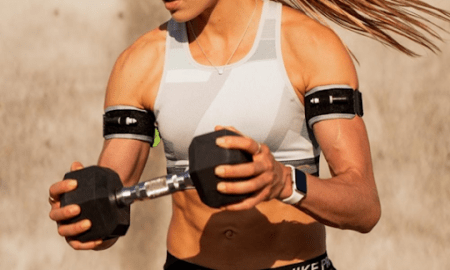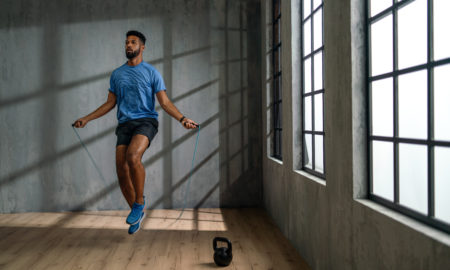This month’s installment is inspired by a seminar conversation I had with Hall of Fame strength and conditioning coach Doc Kreis, biomechanist Sean Flanagan, Ph.D., ATC, the co-medical director of USA Weightlifting, and Brendan Murray, D.C. Dr. Murray and I had seen a 77-kilogram Polish weightlifter at the ’99 Junior World Weightlifting Championships. The lifter lost his balance in the bottom position of the snatch. He then duckwalked with the snatch in full lockout over his head, and as he stood up, he still didn’t have his balance. He then took several crossover steps, again while maintaining the snatch locked out overhead. By the time he’d gained his balance, his toes were off the edge of the platform, and he was given three red lights by the referees. The young lifter took the lift again and was successful. Dr. Flanagan remarked, “I bet he wasn’t wearing a belt.” We replied that was correct—he had not been wearing a belt or knee wraps.
Our discussion followed a point in Dr. Flanagan’s lecture regarding greater lower-back function if the back is flexible and is allowed to use its strength to move and accommodate movement, unexpected movement and unbalanced movement. Many in health care and personal training these days teach patients and athletes to tighten their abdominal muscles as they move so their “core is strong” and their back is protected. The tightening overrides the brain’s natural ability to adapt to motion. The tightening idea, however, is coming under strong scrutiny, and its validity is in question.
That concept requires using abdominal muscles in an unnatural manner to provide a bracing effect. Braces or supports can prevent the development of strength and stability in a joint, region of the body or total body. I recall training at World Gym, and the late Zabo Koszewski and I watched a trainee attempt a maximum squat with 405 pounds. The trainee had knee wraps, lifting belt and a super suit. Zabo turned to me and said, “These guys today wrap everything. They don’t allow their body to develop the strength to handle the weight. I used to squat 500 pounds at Muscle Beach while wearing only swimming trunks—no belt, no knee wraps, no suits.”
I’ve addressed the use of lifting belts in previous columns. Most trainees would be far better off by reducing the amount of weight they lift, using perfect technique and taking the belt off. Once your body adapts to the lifting technique and the weight, you’ll be far better off. Zabo was right. He may not have known specific pathways, but he knew that trainees needed to develop the strength to support their lifts.
Bench press shirts are enormously popular. They have gone through generations of technology. They provide a tightness that makes it very hard to bring the bar down to the chest. The shirts have enabled the current superheavyweight bench press champions to exceed 1,000-pound lifts. Most of them can bench-press 700 to 800-plus pounds without a shirt.
Before the shirts were available, powerlifters used other lifts to create joint stability and strength. Ted Arcidi and Ed Coan used the behind-the-neck press to prepare for the bench press. Both pressed 400 pounds behind the neck. Bill Kazmaier used close-grip bench presses and modified lying triceps extensions. Mike McDonald used a bar he created to get greater pec stretch. Larry Pacifico relied on the lying triceps extension. The late Doug Young used lying triceps extensions and dumbbell flyes. Was it healthier and wiser to develop the supporting structures? Is it wiser to use new technology to bypass the need for developing the supporting muscles?
In general, training without supports is more beneficial. There are, however, exceptions to any rule. If you have an acute injury, you may need to support the area to protect the injury. If you have a chronic injury and have lost the support of the joint, then using braces or supports may be the very thing that enables you to continue training. Train hard, then train smart.
Editor’s note: Visit www.SoftTissueCenter.com for reprints of Horrigan’s past Sportsmedicine columns that have appeared in IRON MAN. You can order the books Strength, Conditioning and Injury Prevention for Hockey by Joseph Horrigan, D.C., and E.J. “Doc” Kreis, D.A., and the 7-Minute Rotator Cuff Solution by Horrigan and Jerry Robinson from Home Gym Warehouse, (800) 447-0008 or at www.Home-Gym.com.




















You must be logged in to post a comment Login